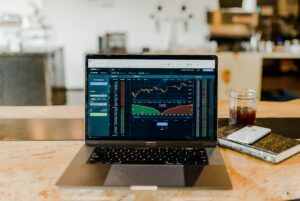On November 12th we held our 5th annual Unbundling Uncovered conference at the Institute of Directors in London. The overall impression we took from the day was that the approach to these challenges has become much more proactive. The buyside is no longer content to just achieve compliance – they want to do this well, and in a way that brings greater budgeting efficiency and investment performance. Providers have taken a hit as the market has shrunk but are now focused on innovating in the areas of greatest opportunity.
There is still a gap – the market hasn’t cleared and isn’t close yet. The only way to get there is increased transparency, but this is still a challenge. Work is focused on standardising interactions, ensuring providers understand how qualitative valuation is calculated, and bridging the differences in perception of value between buyer and seller.
The global picture is hard to assess – we’ve got the extension of the No Action Relief but that doesn’t answer whether research will be funded from P&Ls in the US in future or not. Strong opinions on both sides of the argument exist – we will see where we are when we return to New York on June 10th. Come join us – more information here!
Overall Summary:
420 delegates – approx. 30% Buy side, 25% Sell side, 15% Independent Research, 30% Other
The notes below are a mix of opinions and comments from panels throughout the day. Any inaccuracies or inadequate paraphrasing is a function of our note-taking – we’ve done our best but do let us know if anything needs correcting!
Contradictions in many of these bullets simply reflect very different ways of looking at some tricky issues.
1) Regulatory Arbitrage
– There will be no tweaking from UK regulators on MiFID, regardless of Brexit. Europe may look to make small amendments, but this will be difficult to achieve. The US is waiting to see what happens with the SEC on the fence. Key will be asset owners – their attitude will define direction.
-Biggest concern to the SEC is the US research ecosystem and how the P+L model may have damaged this market across the Atlantic. Is this good for the end user?
-Regulators have different interpretations of MiFID and this will continue to apply, there is no common model globally to tackle this regulation.
-Regionally we have: the UK (majority P+L), Europe (largely RPA), US (client pays) and APAC cherry picking best practices.
-Smaller/medium size asset managers are looking to outsource execution as a result of this. They are also likely to experience significant consolidation as a result of the heavy operational burden of MiFID II. This burden is particularly onerous when using the RPA model, which many have to in order to protect their investment process.
-Predicting which model will become standard is difficult, roughly 50% of panelists felt P+L would win out, whilst the remaining felt a hybrid approach would prevail.
-Ultimately performance will determine where the assets go, and that will ultimately determine which system wins.
2) Managing the Investment Function
-The first year was about being compliant, the second year was about price discovery and negotiation with providers. This year has been about internal negotiations on how to allocate across teams.
-Teams are now more accountable and can now see how their research budgets affect their P&L, which then really makes them think carefully about what they need.
-We were very concerned about potential behavioural change amongst our fund managers impacting their investment process. We took the decision not to count interactions and have a qualitative valuation process.
–Reduction in quality is the number 1 risk. Coverage is poorer these days – not necessarily in quality, but definitely in volume and especially covering small caps.
-The mechanism to reduce that risk is transparent valuation feedback. Consolidation is a natural occurrence in an over-supplied market, but if it’s done in haste and through necessity it can be dangerous.
-Sometimes portfolio managers need to consume 95 things to find something that matters, and the risk is that fund managers don’t consume enough to get to the good stuff.
– The ultimate measure of success are the outcomes asset managers deliver to clients – it’s difficult to judge the effectiveness of research in any other way. That means you are looking for differentiated content to achieve that.
-Sales coverage is still important and valued but is suffering. Curating content is hard to do without salespeople and some asset managers are prepared to pay for it when it’s done well.
-Understanding qualitative valuations from the buyside is a challenge for the sell side, therefore asset managers must be very transparent about how they operate their valuation process.
-The biggest behavioural change has been the change from points to dollars in a valuation process – there’s a reason why casinos give you chips! Investment professionals do not question “who’s paying for it” – they ask “what’s the price” and then they say whether that makes sense to them or not.
–The majority of the change in the research market is ahead of us.
-Pricing is like the mobile phone market a few years ago – lots of different pricing plans, but in time that will normalise which will improve transparency and price discovery
-MiFID II takes the market to a pull model instead of a push model and that changes workflows and makes firms start to ask new questions internally. In 5 years the research market won’t look anything like it does now.
3) The Research Product – can you innovate your way out of MiFID II deflation?
-Innovation in the research product is critical to retaining and acquiring new clients, because the cost of switching/adding/trialling providers is still a barrier for research providers. A differentiated, and innovative offering can tilt the scales.
-Independent research should benefit because by definition they provide differentiated product, and cross subsidization of bank research isn’t sustainable in the long term. However, they face stiff competition from banks who are also innovating with new products.
-Embedding new services, such as ESG, into existing product has allowed some sell side firms to cross sell. This serves a growing demand from clients who are willing to pay a good price for it while offsetting the much maligned cross subsidisation.
-Alternative data, along with ESG are seen as the two key areas where product innovation provides the best opportunities, where they provide an overlay analysis of data sets that allows clients generate more value from the data. Fundamental investors are someway behind quant investors in terms of utilising alt data.
-The use of new technologies to process data and text such as AI and NLP were not necessarily the holy grail for research analysis. The human overlay to interpret and contextualize data remains important. Face to face contact with analysts will still be an essential element of the research process.
-Content management has experienced considerable innovation. The implementation of HTML5 has been important. Repurposing content is key, particularly for the sell side where they are exploring a myriad of ways around further monetizing of their content. Protecting IP using secure links is also a big theme.
– Challenges for new innovative products to get market penetration remain however. The biggest one is proving ROI to clients. This is still an unknown in most cases, and unless proven, the buy side may still be reluctant to take a ‘’leap of faith’’.
-Value will always trump cost, so the product innovators need to provide transparency around performance.
-Investment research providers face competition from new entrants who provide contextual insight services in the Alt data space.
4) Valuation and Budgeting
-Regulation has made the valuation process more complicated because moving from a points based system has led to less commonality in approach across the buyside.
-Valuation is subjective, and it’s important not to interrupt the investment process by complicating it. The best you can do is put in place a framework to help evaluate research.
-A positive outcome from MIFID has been the creation of a deeper level of data to assist and justify the valuation process. This has removed some of the onus on PMs and helped operations better understand where the value is.
-The use of deep learning and AI could benefit the sell side, by providing insights on how to better service the buy side, thus smoothing the relationship.
-The most effective means to arrive at a valuation is the old-fashioned approach, talking to PMs to find out who is adding the most value and who they prefer to work with.
-There remains a sense of frustration from sellside that still less than half of the client base are giving detailed feedback.
-Investors don’t feel they need to provide feedback if they are paying from P&L.
-One half of the buyside values on a volume driven basis, while the other half is quality based, but their criteria is far from transparent here. The sellside expect this to continue to evolve, with more of a shift to quality and away from volume.
-While research pricing seems to have found a base, research is still being priced at a discount to fair value (whilst above cost).
-The price of written research is less relevant because the real value comes from analyst access and corporate access.
5) Corporate Access
-Two key trends dominate the corporate access space. 1) The function is now more and more moving in house at buy side firms. Next year sees the inaugural buy side corporate access conference, which represents an important milestone in this transition. 2) Corporates are seeking more control over the corporate access process to ensure they are working with the right investors.
-These trends are being enhanced by technology solutions that allow better tracking of interactions, meeting and conferences which is improving the execution of corporate access. This helps in-house teams get more value from their interactions from corporates, while also helping corporates track, monitor and target the investors they wish to allocate time with.
– ‘’Structural tension’’ already existed but has been exacerbated since MIFID II, because long-only firms have been unable to compete on price with hedge funds for access. There has also been a trend where second-tier sell side firms have increased the cost of corporate access because they have been squeezed out of research relationships.
-This has led to complaints from corporates that they’re seeing a lot of hedge funds instead of long only funds, which is a concern. As a result, corporates have become much more proactive in targeting longer-term investors by approaching them directly.
-Sell side corporate access teams still have a role to play because they have large networks and economies of scale, whereas in house buyside teams have limited resources. Some sell side firms, rather than simply organising one-on-ones, are doing a lot more to benefit clients more holistically with more thematic conferences for instance. E.g. Disruption.
-Coverage is suffering, and the concern about this from the audience increased when this was asked specifically about small/mid cap research (!).
6) Defining Best Practice in Research Procurement
-A centralised team is essential to make sure the buyside do not under or overpay for research. A centralised approach also allows cost cutting because you can exercise economies of scale.
-The sellside has taken an interactions based approach to valuing research. This is not how the buyside should work, as no two interactions have the same value and there must be a quality overlay.
-Unanimous agreement that a quality model is needed rather than just relying on raw interaction data, crucial to understand the value behind the relationships.
-Transparency and consistency in a buyside valuation model are the two practices that all firms should model around regardless of regulatory jurisdiction.
-The sellside knows that their content has value but they have to tighten up who it goes to and how they want to monetise their content.
-The buyside are utilizing vote data at varying levels of complexity, with some firms going as deep as analyst names and others looking with a top down sector level approach.
-The more feedback buy side firms can provide, the better they can dictate the level of service that they want.
-Free trials are not a big part of culture with many of the buyside. Providers are expected to present something new and compelling and many on the buyside would rather take them on a paid basis and build the relationship from there.








